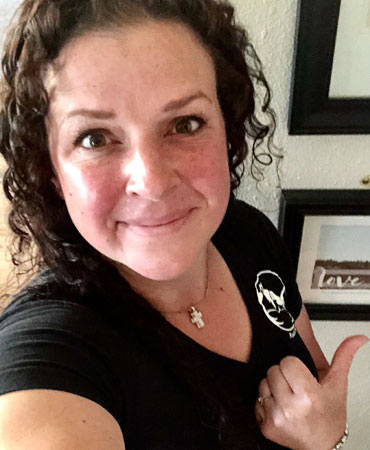Growing the Next Generation of Leaders
Hey there, and welcome to Part II of Gravity Junction’s series on Leadership! In Part I, we chatted about a dramatic scarcity of leaders to push us forward.
We touched on why you can’t just pick a leader off a tree like a lemon. These great men & women are forged by years of lessons and hardships, triumphs, and collapses.
We talked about the itching question: What makes a great leader, anyway?
Over the years at Gravity Junction, we’ve been honored to help well-known leaders share their messages and help influence others positively (shout out to one of our clients and leader extraordinaire, John Addison). In that time, we’ve picked up a thing or two. We’ve noticed that leaders tend to have:
- The ability to truly listen to other people
- A large capacity for empathy (the ability to put themselves in other people’s shoes)
- Motivation to take action
How do we tackle the problems discussed in Lack of Leadership Part I?
It’s a massive topic that would take an infinite amount of time to flesh out, but for now, we can bring awareness to the problem and start the conversation about how to mend the gaps. We’ve brought critical thinking and problem solving into the picture by breaking down the areas for growth into three different pathways where “leadership schools” could be built.
“A boss has the title. A leader has the people.” – Simon Sinek
Where can we “Train” Leaders?
Schools
School. It’s where everything begins. The leadership styles and qualities portrayed in an educational environment affect the lifelong habits and behavior of children and adolescents. Subjects like math and science are core parts of every child’s education, which is important. But, what if every school had a leadership curriculum just like science, history, or math?
Frank AuCoin, one of the most successful entrepreneurs in South Carolina, thinks the key lies in “Throwing students in the middle of the action.” “Failing fast” is a term commonly thrown around in Silicon Valley, but Frank also thinks it’s one of the keys to developing leaders. Teaching our students that failure isn’t a negative, but a positive stepping stone has the potential to transform how students view leading others & taking smart risks.
Some would argue that lessons in leadership qualities would have a far greater ROI in our kids than regurgitating facts out of a textbook. Imagine students getting up and giving famous public speeches from the likes of Martin Luther King Jr, Winston Churchill, and other great leaders to build public speaking skills at an early age. Imagine children diving deep into what kind of leadership styles exist, and which style they think they’d best excel in exemplifying. That’d do wonders for a child’s confidence and development.
Projects vs. Textbooks
Projects could involve things like forming small groups to help the local community. A young leader could pick a nursing home or a food bank and find a way to make an impact, however small while leading a team. Sylvi, one of our Gravity Junction team members, went to a Project-Based Learning school where she did things like setting up a non-profit organization from scratch. That’s something you can’t learn by reading a textbook.
Sylvi describes PBL (Project Based Learning) as follows: “They are training you to be a leader and that demands your best at all times. My school used a set of nine core principles called “survival skills,” everything they teach hinges on those basic tenants. They range from agility & adaptability to global community & perspective, and even initiative & entrepreneurship. These skills create a foundation for a well-rounded leader and it takes one hell of a person to encapsulate them all.”
Looking back, the things we remember most about school aren’t learning the Pythagorean Theorem or rattling off state capitals. We remember the big projects and memorable moments that pushed us forward and the opportunities that allowed us to use our creativity and problem-solving skills to do good.
Creating a robust leadership curriculum would go a long way to creating a solid foundation of self-confidence & strong character from an early age.
Companies
Capitalism is the name of the game in America and beyond, so a lot of responsibility falls onto corporations to develop people.
Facebook, Microsoft, Google, and Amazon: These companies are more powerful than most countries on Earth. In the last few years, we’ve seen them make big promises to reduce carbon emissions or push for stronger worker’s rights. Corporate America must play a role in helping develop leaders.
Entering the “real world” leaves so many recent graduates disillusioned when it hits them that working all day is their new reality. It’s a confusing time when new members of the workforce consider their futures, what interests them, and who they are as people. Onboarding programs usually do a good job of bridging that transition & ensuring new graduates have some structure when it comes to their new roles.
AuCoin suggests that the key to creating leaders is to throw them into the action as soon as possible. That means creating a vision and letting employees make decisions to execute that vision. Turning dreams into reality is a matter of execution, and that’s exactly what leaders do.
Leadership programs that teach soft skills like public speaking and decision making can do wonders for companies & the people they employ.
Communities
There’s a school of thought in America that we can solve a lot of problems by getting back to the basics. Strong local communities are the bedrock of our country, people say. Locals know what their community needs more than decision-makers in faraway state capitols or Washington D.C. Think state government versus federal. It’s the idea that people care more about what’s going on in their “backyard” so to speak, as opposed to issues that feel far away from them or are not of immediate concern.
 Why not have leadership programs in each county or township across the United States? People enjoy connecting with their local communities, and it provides an outlet outside of the workplace to create deep relationships and build skills.
Why not have leadership programs in each county or township across the United States? People enjoy connecting with their local communities, and it provides an outlet outside of the workplace to create deep relationships and build skills.
One great example is in Des Moines, Iowa. The Des Moines Leadership Institute is a comprehensive program that teaches students through community-based projects, public speaking, and project management.
Warren Buffet, the most famous investor in human history, doesn’t even have his college degree hung up on his wall. He credits his success to a public speaking course he took that was publicly available to community members. He’s even got his $100 Dale Carnegie Public Speaking class certificate on his wall, earned over a three-week time span.
The next great leaders may be looking for a way to develop themselves, but don’t have companies or schools to provide them with the tools or resources they need in order to truly tap into their respective leadership styles. That’s where communities can step in, and do so with a different approach than a school or a company.
Final Thoughts
Can you think of some other ways we can create programs or structures that reliably & consistently build world-class leaders? Schools, companies, and communities are great places to start developing leadership skills in hungry, ambitious people.
Can we teach empathy, better listening, and how to take action inside these institutions in a more effective way than we are right now?
To close it all up, we’ll throw in one of our favorite leadership quotes.
“Being positive in a negative situation is not naive. It’s leadership.”
Follow Gravity Junction on social and keep an eye out for Part III.





 Why not have leadership programs in each county or township across the United States? People enjoy connecting with their local communities, and it provides an outlet outside of the workplace to create deep relationships and build skills.
Why not have leadership programs in each county or township across the United States? People enjoy connecting with their local communities, and it provides an outlet outside of the workplace to create deep relationships and build skills.




0 Comments